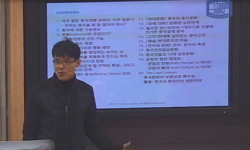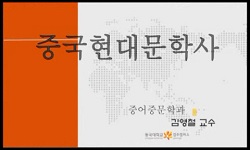China has been threatened by the West several times since the 1950s and its nuclear deterrence capabilities have been recognized as an indispensable tool for its nuclear deterrence strategy. This has demonstrated for China’s successful development o...
http://chineseinput.net/에서 pinyin(병음)방식으로 중국어를 변환할 수 있습니다.
변환된 중국어를 복사하여 사용하시면 됩니다.
- 中文 을 입력하시려면 zhongwen을 입력하시고 space를누르시면됩니다.
- 北京 을 입력하시려면 beijing을 입력하시고 space를 누르시면 됩니다.

1970~1980년대 중국의 핵전력 강화 노력과 핵 억제전략 = China’s efforts to strengthen nuclear power in the 1970s and 1980s and its nuclear deterrence strategy
한글로보기부가정보
다국어 초록 (Multilingual Abstract)
China has been threatened by the West several times since the 1950s and its nuclear deterrence capabilities have been recognized as an indispensable tool for its nuclear deterrence strategy. This has demonstrated for China’s successful development of its first nuclear bomb on October 16, 1964. Since then its was a report that China has possessed about at least 50 nuclear warheads by the end of the 1960s. Compared with numbers of nuclear warheads of United States and the Soviet Union China has been regarded as an absolute inferiority disposition of demonstrating its nuclear deterrence capabilities.
However, during the period ranging from the 1970s to the 1980s, China has increased its nuclear deterrence capabilities in saying its approximately 230 numbers of nuclear warheads in the year of 1989.
In addition China has developed its so-called nuclear triads: Intercontinental Ballistic Missiles (ICBM) deployed land nuclear sites, nuclear-powered submarines equipped with submarine launched ballistic missiles (SLBM), and H-series strategic nuclear bomb-equipped long-range bombers known as H-6 aircraft.
This indicates that China has changed its concept of nuclear deterrence strategy from existent deterrence strategy to minimum deterrence strategy.
Moreover, China also demonstrated its nuclear deterrence strategy known as concept ambiguity of using its nuclear weapons because of its weakness and limits of facilitating nuclear weapons and capabilities.
In conclusions China continues to increase its nuclear deterrence capabilities and its nuclear arsenals regarding to its sufficient nuclear deterrence capabilities and People’s Liberation Army (PLA) wants to qualitative leading as well as quantantative comparison with United States mainly. Chinese nuclear strategy will be more innovative reform to meet its nuclear deterrence capabilities in either qualitative or quantile comparison.
동일학술지(권/호) 다른 논문
-
- (재)한국군사문제연구원
- 우평균
- 2022
- KCI등재
-
- (재)한국군사문제연구원
- 문성묵
- 2022
- KCI등재
-
전략을 추동하는 신무기 고찰 - 전략과 전장을 변화시키는 변수로서의 첨단기술력
- (재)한국군사문제연구원
- 반길주
- 2022
- KCI등재
-
- (재)한국군사문제연구원
- 장용
- 2022
- KCI등재




 DBpia
DBpia








